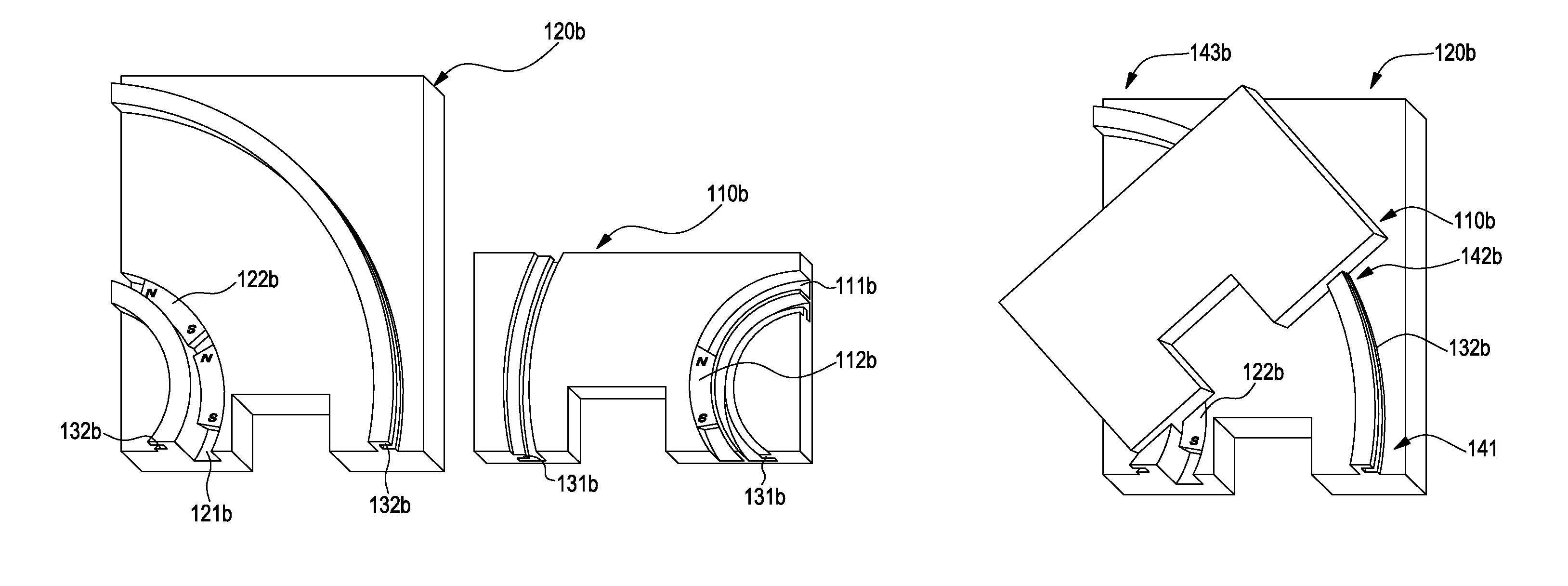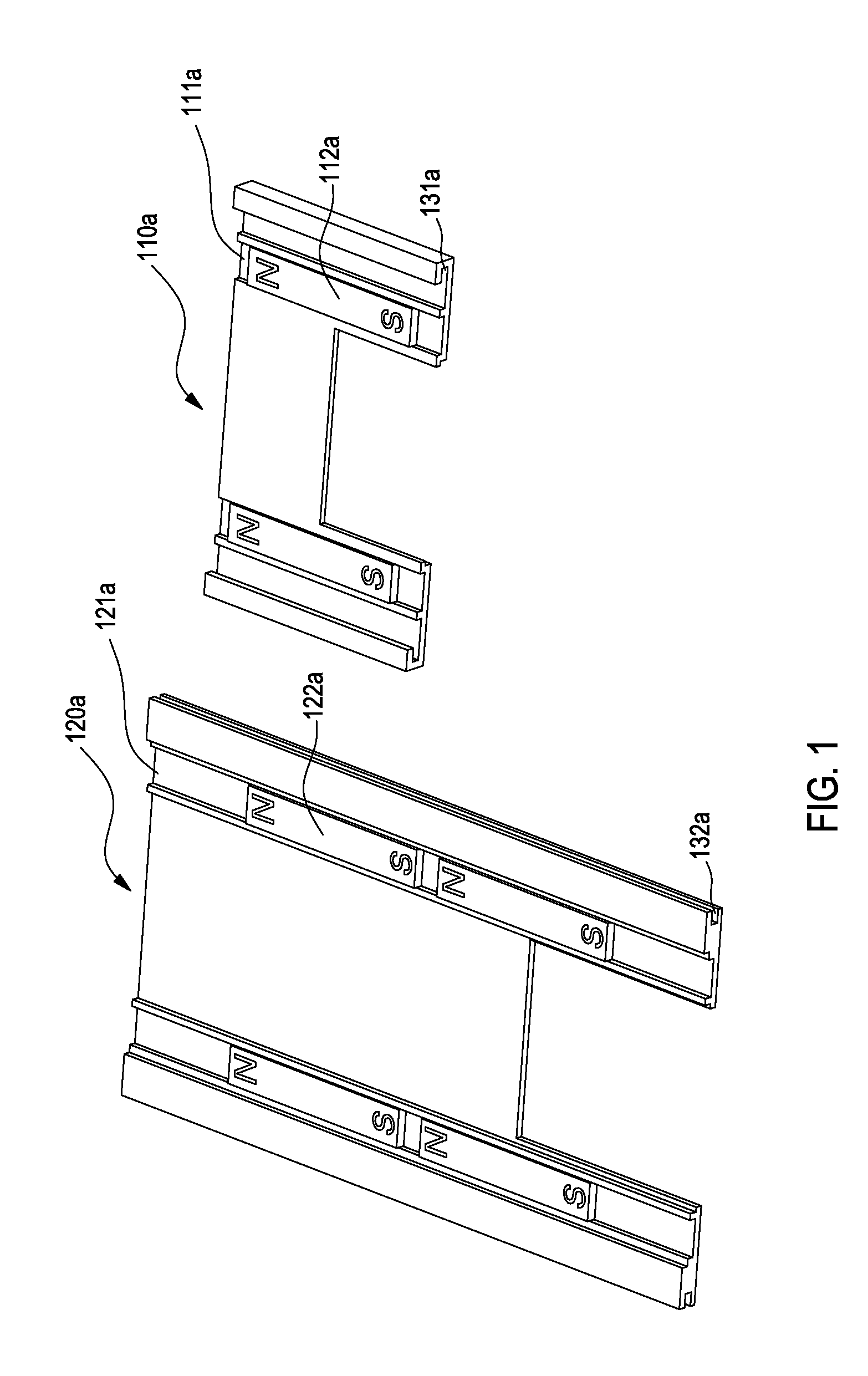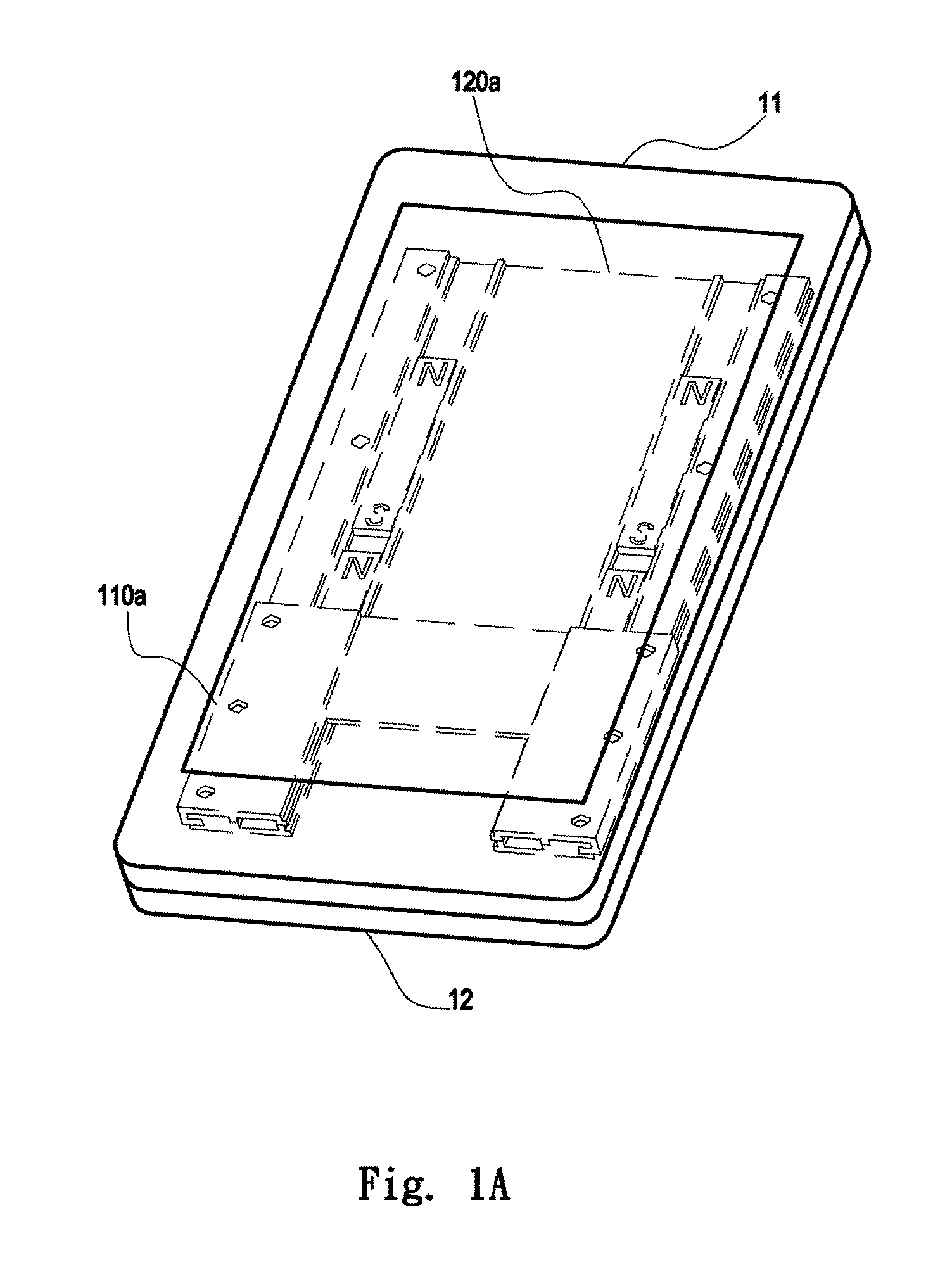Multi-stage sliding structure of handheld device
a handheld device and multi-stage technology, applied in the direction of sliding contact bearings, mechanical energy handling, mechanical apparatus, etc., can solve the problems of easy wear of flanges and ribs, increased cost, and increased cost, so as to reduce cost, simplify manufacturing process, and avoid elastic fatigue
- Summary
- Abstract
- Description
- Claims
- Application Information
AI Technical Summary
Benefits of technology
Problems solved by technology
Method used
Image
Examples
first embodiment
[0047]FIG. 2 is a graphical picture showing the first sliding block 110a stops at a first position 141a according to the present invention.
[0048]In each second groove 121a of the second sliding block 120a, there is unoccupied space between the opening at the top end of the second groove 121a and a top end of the second magnetic strip 122a on the upper side adjacent to the opening. When the first sliding block 110a slides to the first position 141a, the positions of the N-poles of the two first magnetic strips 112a are corresponding to the two unoccupied spaces connecting to the top openings of the two second grooves 121a, respectively. In this case, by way of repulsion between the same magnetic poles, the N-poles of the second magnetic strips 122a on the upper side repel or push against the N-poles of the first magnetic strips 112a respectively. Meanwhile, the S-poles of the second magnetic strips 122a on the upper side repel or push against the S-poles of the first magnetic strips ...
second embodiment
[0063]FIG. 6 is a graphical picture of the sliding movement of the sliding structure according to the present invention.
[0064]With reference to FIG. 5, in the second groove 121b of the second sliding block 120b, there is unoccupied space between the opening at the left end of the second groove 121b and a top end of the second magnetic strip 122b on the upper side adjacent to the left opening, and there is unoccupied space between the opening at the bottom end of the second groove 121b and a bottom end of the second magnetic strip 122b on the lower side adjacent to the bottom opening. With reference to FIGS. 5 and 6, when the first sliding block 110b slides to a first position 141b, the position of the S-pole of the first magnetic strip 112b is corresponding to the unoccupied space connecting to the bottom opening of the second groove 121b. At this time, by way of repulsion between the same magnetic poles, the N-pole of the second magnetic strip 122b on the lower side in FIG. 5 repel...
third embodiment
[0071]FIG. 8 is a graphical picture showing the first sliding block 110c stops at a first position 141c according to the present invention. Further understandings can be achieved by referring to FIGS. 7 and 8 together.
[0072]When the first sliding block 110c engages with the second sliding block 120c, two end poles of the first magnetic strip 112c can be stably located respectively in two positions corresponding to the spaces between the two second magnetic strips 122c. When the first sliding block 110c is disposed at the first position 141c with respect to the second sliding block 120c, the N-poles of the two second magnetic strips 122c are corresponding to and repel or push against the N-pole of the first magnetic strip 112c. Similarly, the S-poles of the two second magnetic strips 122c are corresponding to and repel or push against the S-pole of the first magnetic strip 112c. Thus, the first sliding block 110c stably stops at the first position 141c in a balance state due to the a...
PUM
 Login to View More
Login to View More Abstract
Description
Claims
Application Information
 Login to View More
Login to View More - R&D
- Intellectual Property
- Life Sciences
- Materials
- Tech Scout
- Unparalleled Data Quality
- Higher Quality Content
- 60% Fewer Hallucinations
Browse by: Latest US Patents, China's latest patents, Technical Efficacy Thesaurus, Application Domain, Technology Topic, Popular Technical Reports.
© 2025 PatSnap. All rights reserved.Legal|Privacy policy|Modern Slavery Act Transparency Statement|Sitemap|About US| Contact US: help@patsnap.com



